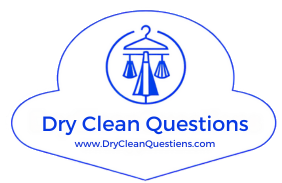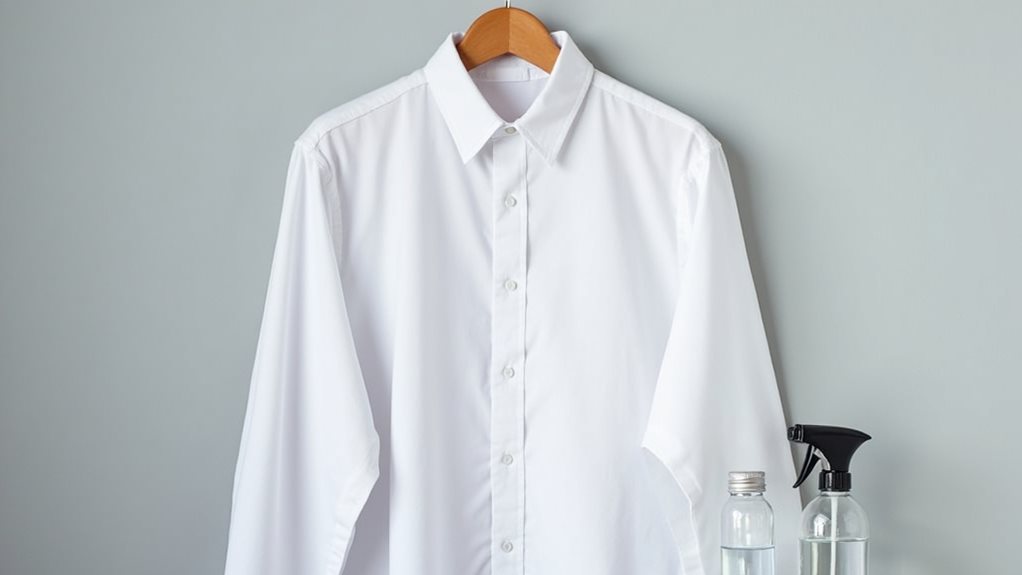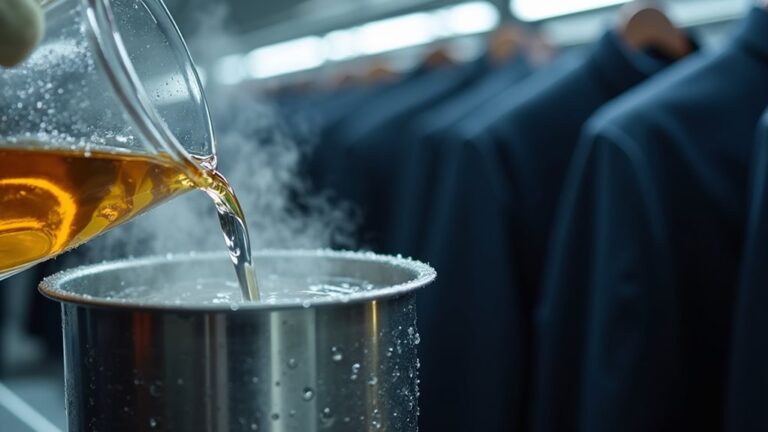Dry cleaning’s your go-to for tackling stubborn oil stains and preserving delicate fabrics like silk and wool, since those chemical solvents work magic where water fails. You’ll love the convenience and professional results, but your wallet might not appreciate the costs, especially when everyday cotton items don’t really need this treatment. The key’s understanding care labels and communicating stain details clearly, because honestly, not every mark disappears even with industrial-grade equipment. Smart choices ahead will save you money.
Understanding What Dry Cleaning Is and How It Works
When I first heard the term “dry cleaning,” I’ll admit I was genuinely confused about how clothes could get cleaned without getting wet – it seemed like some kind of laundry magic trick that defied basic logic.
Here’s the thing though: the cleaning process isn’t actually “dry” in the way you’d imagine, but rather uses chemical solvents instead of water to tackle those stubborn oil-based stains that regular washing can’t handle.
Professional dry cleaners work their magic on delicate fabrics like silk, wool, and velvet – fabric types that would shrink or lose their shape with traditional cleaning methods.
The solvents used effectively remove dirt while protecting your garment’s structure, guaranteeing you get clean clothes without the damage that water-based methods might cause to these precious materials.
The most commonly used solvent in industrial dry cleaning machines is perchloroethylene, though many facilities are now switching to more eco-friendly alternatives like hydrocarbon or liquid CO2.
Key Benefits of Professional Dry Cleaning Services

Although I used to think professional dry cleaning was just an expensive luxury for fancy people with more money than sense, I’ve discovered that these services offer some genuinely impressive benefits that can transform how you care for your wardrobe.
Professional dry cleaning isn’t just for the wealthy—it’s a game-changing investment that revolutionizes how you maintain your entire wardrobe.
The advantages of professional dry cleaning become crystal clear when you’re dealing with stubborn stains that laugh at your home remedies, or when you’ve got delicate items that need tender loving care.
The expertise of professional cleaners means they’ll tackle oil-based disasters with industrial-grade equipment, while convenient pick-up and delivery saves you precious time.
This cleaning method focuses on quality and longevity, helping extend the lifespan of garments through proper care of your clothes—making it surprisingly cost-effective! 💫
Professional dry cleaning uses specialized solvents instead of water, making it particularly effective for delicate fabrics like silk, wool, and cashmere that could be damaged by traditional washing methods.
Drawbacks and Limitations of Dry Cleaning

While I hate to burst the bubble after singing dry cleaning’s praises, this service comes with some real drawbacks that you’ll want to contemplate before making it your go-to garment care solution.
First, dry cleaning services can seriously drain your wallet—I’ve watched budget-conscious consumers wince at receipts that rival restaurant bills 💸.
The specialized equipment requires harsh solvents that create legitimate safety concerns, potentially irritating sensitive skin and contributing to environmental pollution when mishandled.
Even professional cleaners can’t work miracles on every stain, especially when fabrics require special care that doesn’t mesh well with certain cleaning methods.
Communication breakdowns about specific stain details often lead to disappointing results, and accessibility becomes problematic if you’re stuck without nearby disadvantages of dry cleaning locations.
The premium pricing is largely driven by the substantial overhead costs, including specialized equipment that can cost hundreds of thousands of dollars, extensive insurance requirements, and the need for commercial-grade ventilation systems.
Cost Considerations When Choosing Dry Cleaning
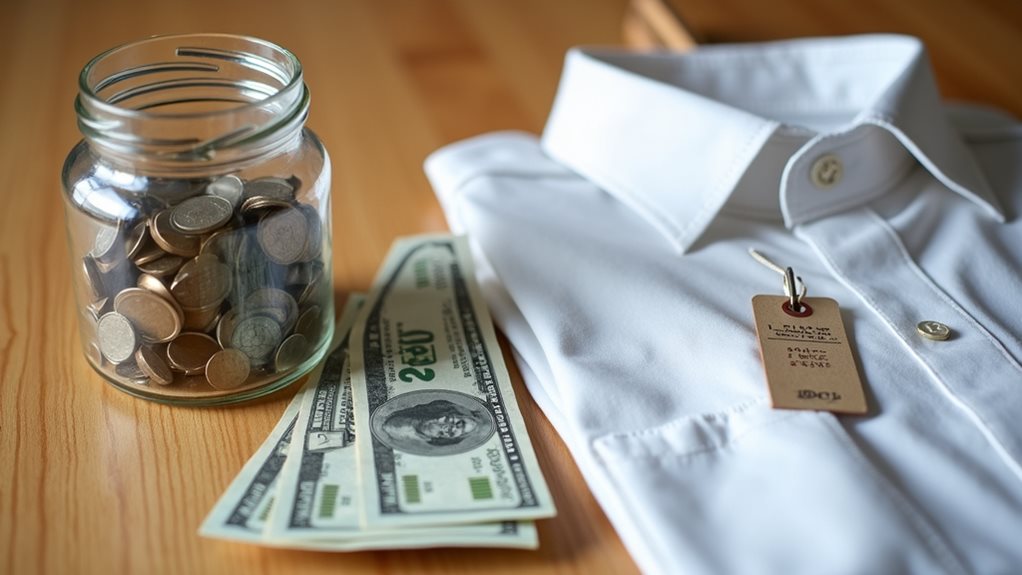
Since your wallet is probably still recovering from that last dry cleaning receipt, let’s plunge into the financial reality of professional garment care and explore some strategies I’ve learned through years of trial and error 💰.
Here’s what smart spending on dry cleaning looks like:
- Calculate cost per wear – That $15 blazer cleaning becomes reasonable when you wear it 20 times versus twice.
- Shop around for competitive pricing – I’ve found $8 differences between shops for identical services.
- Ask about eco-friendly options upfront – Sustainable practices often cost more, but some places offer reasonable rates.
- Budget for additional charges – Stain removal and specialized equipment treatments add up quickly.
The specialized equipment and expertise extend your garment’s lifespan, making professional dry cleaning an investment rather than just an expense. Understanding the fabric complexity of your garments helps you anticipate higher costs for items requiring specialized handling and treatments.
Making the Right Decision for Your Garments
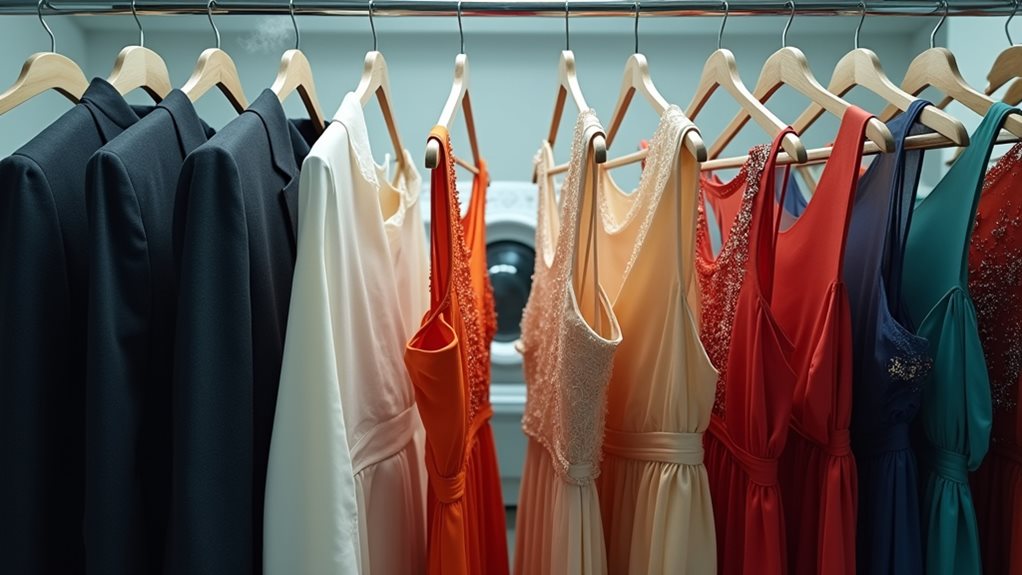
When I first started building my professional wardrobe, I’d stare at care labels like they were written in hieroglyphics, constantly second-guessing whether my favorite silk blouse really needed that $12 cleaning or if I could risk a gentle hand wash 🤔.
Now I’ve learned that making smart dry cleaning decisions isn’t about choosing between advantages and disadvantages—it’s about understanding when professional care truly matters.
You’ll want dry cleaning for delicate fabrics like silk and wool, garments with stubborn oil-based stains, and pieces with intricate details that regular washing would destroy.
However, save your money on everyday cotton items that don’t require specialized cleaning processes.
Unlike water-based washing, dry cleaning uses chemical solvents to clean fabrics without causing shrinkage, color bleeding, or structural damage.
Always communicate specific stain details to your cleaner, and remember that investing in proper fabric care protects your clothing investments long-term.
